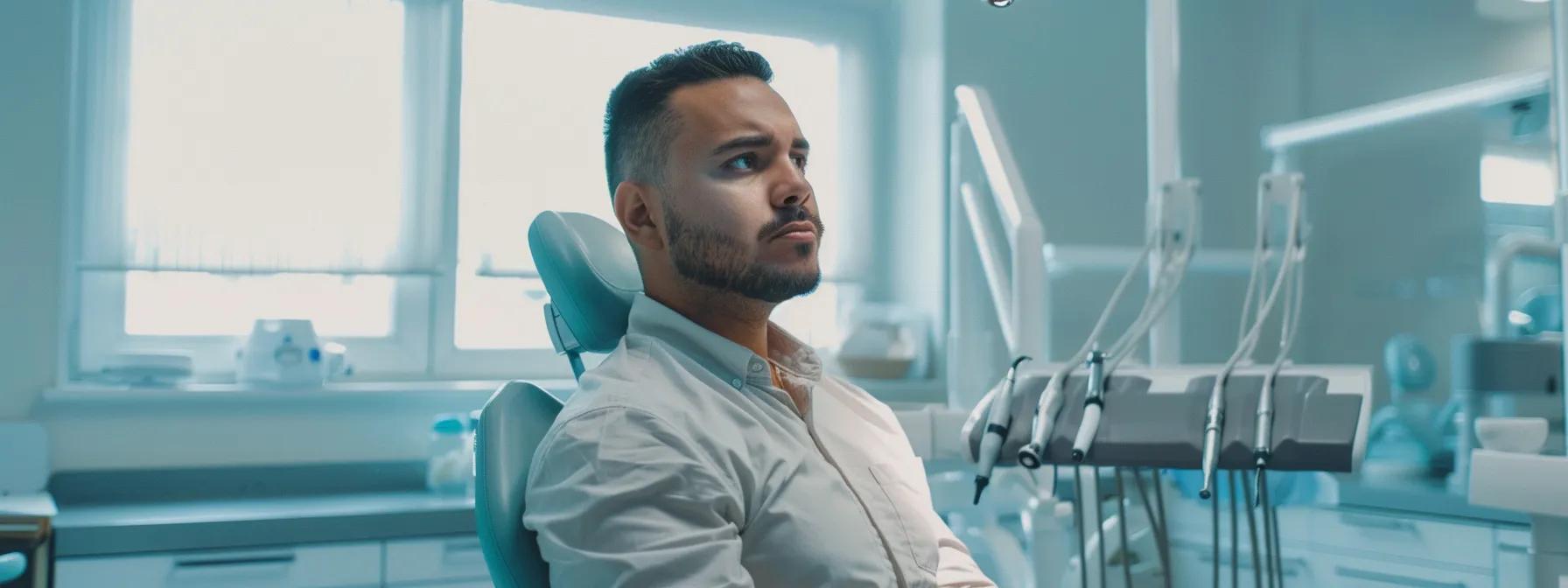Don’t Panic—Here’s How to Handle It
You’re enjoying a meal or brushing your teeth when suddenly—pop! You feel something strange in your mouth, and the next thing you know, your filling or crown is no longer in place. It’s a common dental mishap, but one that can feel unsettling and uncomfortable. Losing a restoration exposes the vulnerable inner part of your tooth, which can lead to sensitivity, pain, or even infection if not treated quickly.
At Grand Prairie Family Dental, we understand how overwhelming it can be to deal with unexpected dental issues. That’s why we’ve outlined the key steps to take when a crown or filling falls out, what temporary solutions may help, and how professional care can quickly restore your comfort and oral health. Let’s walk through exactly what to do to minimize damage and make sure you’re well taken care of.
Immediate Response: What to Do First
The first moments after you lose a filling or crown are crucial. What you do—or don’t do—can significantly affect the outcome and your ability to save the original restoration. While it’s natural to feel a surge of panic, staying calm is the most important step. This allows you to take smart, safe action.
If possible, locate and retrieve the lost crown or filling. Handle it carefully and avoid touching the inner surface that would have bonded to your tooth. Place the crown in a clean container or a zip-lock bag. Rinse your mouth with warm water to clear away debris and gently clean the area around the exposed tooth. Rinse the restoration as well—but don’t use soap, toothpaste, or any abrasive cleaner. Harsh chemicals can damage it or irritate your gums.
If the tooth feels sharp, extremely sensitive, or painful, it likely means the inner structure or nerves have been exposed. This requires additional care until you can see your dentist.
Temporary Fixes at Home
While your best course of action is to see a dentist as soon as possible, there are a few at-home measures you can take to manage discomfort and protect the tooth in the meantime. Temporary solutions are not intended to replace professional treatment, but they can help prevent further damage and reduce pain.
Here are some effective temporary measures:
- Dental cement or wax: Available at most pharmacies, these products can be applied over the exposed tooth to create a protective barrier. They help reduce sensitivity and prevent debris or bacteria from entering the area.
- Over-the-counter pain relief: If the exposed tooth is causing discomfort, non-prescription medications like ibuprofen or acetaminophen can help manage pain until you reach the dental office.
- Food precautions: Stick to soft, non-irritating foods such as yogurt, scrambled eggs, and lukewarm soup. Avoid chewing on the affected side. Stay away from hot, cold, sugary, or sticky foods that could worsen the sensitivity or dislodge the temporary covering.
These strategies are especially helpful if you lose a restoration outside of office hours or while traveling. However, it’s important to remember that temporary fixes are just that—temporary. Leaving the tooth exposed or relying on OTC materials for too long can increase the risk of decay, infection, and tooth fracture.
Why Prompt Dental Care Is Essential
When a filling or crown falls out, time is of the essence. While you might be tempted to “wait and see” if the discomfort subsides or if the tooth feels manageable, delaying care can lead to significant complications. An exposed tooth is highly vulnerable to decay, and even a short delay can allow bacteria to penetrate the inner tooth structure.
In some cases, the original crown or filling may still be usable—especially if it’s undamaged and fits well once cleaned. But if the tooth beneath it has shifted, decayed, or fractured, a new restoration will be necessary. Your dentist will evaluate both the tooth and the restoration to determine the best course of action. Either way, early intervention leads to simpler, more cost-effective solutions and greatly reduces the risk of needing more invasive treatment later.
Prompt care also helps manage discomfort, especially if the tooth becomes sensitive to air, temperature, or chewing. If you experience throbbing pain, swelling, or signs of infection such as a bad taste or pus, it’s essential to call your dentist immediately. These are signs that the inner tooth may be compromised.

What to Expect at Your Dental Visit
At Grand Prairie Family Dental, we understand that dental emergencies are stressful—and our priority is to make your visit as smooth and comfortable as possible. Your appointment will begin with a thorough examination of the affected area. This often includes X-rays to check for decay, infection, or hidden fractures beneath the surface of the tooth.
If the original crown or filling is intact and the tooth hasn’t suffered further damage, we may be able to clean and re-cement it in place. This process is quick and typically involves minimal discomfort. If the tooth has changed shape, decayed, or cracked since the original restoration was placed, we’ll recommend a new custom filling or crown. In most cases, a temporary crown will be placed while your permanent one is fabricated.
Your comfort is a top priority. We offer local anesthesia and sedation options for patients who are anxious or in significant discomfort. Our dental team is trained to guide you through every step, ensuring that you feel informed and at ease throughout the process.
Preventing Future Lost Fillings or Crowns
Understanding why restorations come loose can help you avoid repeat issues in the future. Crowns and fillings can fall out for several reasons, including decay under the restoration, weakened bonding, trauma, or wear from habits like grinding or chewing on ice. Regular dental checkups can catch early warning signs before they lead to failure.
Here are some prevention tips to help keep your dental work secure:
- Maintain excellent oral hygiene: Brush twice a day with fluoride toothpaste and floss daily to reduce the risk of decay around or beneath restorations.
- Avoid high-risk foods: Hard, sticky, or crunchy foods can loosen crowns and fillings. Avoid chewing on ice, hard candy, or using your teeth as tools.
- Use a nightguard: If you grind your teeth at night, wearing a custom nightguard can protect both natural teeth and restorations from excessive pressure and damage.
- Get regular checkups: See your dentist every six months to monitor the condition of your fillings and crowns. Catching early signs of wear or leakage helps prevent sudden failures.
By following these strategies, you can extend the life of your restorations and reduce the risk of unexpected dental emergencies.
Grand Prairie Family Dental: Your Emergency Resource
Losing a filling or crown can feel like a big problem—but with the right dental team, it doesn’t have to be. At Grand Prairie Family Dental, we treat dental emergencies with urgency, compassion, and expertise. We offer same-day emergency appointments so you can get relief fast and avoid worsening the situation.
Our friendly team will walk you through every step of your treatment, whether it’s reattaching an old crown, placing a new one, or filling a cavity. We understand that emergencies are stressful, so we offer sedation options to ease anxiety and ensure a calm, pain-free experience. And with flexible payment options and transparent pricing, we help you manage the financial side of care without added stress.
You don’t have to face a dental emergency alone. Whether your crown popped off during dinner or your filling disappeared after brushing, we’re just one phone call away. We’re here to help you smile again—quickly, comfortably, and confidently.
Book an appointment with Grand Prairie, TX’s top dentist, Dr. Khademazad, today. It’s the first step to a better smile and increased self-esteem. Act quickly to enjoy a beautiful, straight smile without the pain of traditional braces. Call us at 972-988-0900.
Schedule Your Consultation Today!
Grand Prairie Family Dental
2475 W Pioneer Pkwy Grand Prairie, Texas, 75051
Google Reviews: See More Reviews From Grand Prairie Family Dental
View information about local places in our community.
Driving Directions to Our Practice
Questions Patients Ask?
What should I do if my crown or filling falls out?
Retrieve it if possible, rinse it and your mouth gently, and cover the exposed tooth with dental wax or cement. Avoid chewing on that side and see your dentist as soon as possible.
Is it okay to wait a few days to fix a lost filling?
Ideally, no. Even if you’re not in pain, the tooth is unprotected and can quickly become decayed or infected. Prompt care prevents complications.
Will I need a new crown or filling?
Not always. If the original crown is undamaged and fits properly, your dentist may be able to reattach it. Fillings, however, are usually replaced entirely.
Related Articles
Emergency Tooth Extraction, Dental Emergencies, Tips for Emergency Dental Care, Dental Emergency Symptoms, Emergency Dental Procedures, Emergency Dental Insurance, Dental Trauma and Injuries, Lost a Filling or Crown






